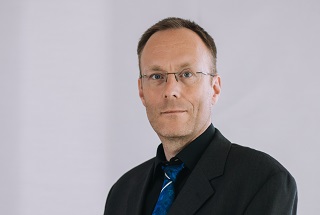"We have significantly expanded regional cooperation"

What were the highlights of 2023 from the perspective of Fraunhofer CSP?
We have achieved very important results in several projects on the issue of polymer service life in photovoltaic modules. Our expertise in this area has now reached a level of development and visibility that makes us the first point of contact in many cases. This brings us closer to our goal of being able to make actual reliability predictions for polymer materials when used in modules. This will enable us to make a significant contribution to reducing costs in the solar industry. Another highlight was the launch of the Fraunhofer joint project "HySecunda": We are leading a consortium of nine Fraunhofer Institutes and the Fraunhofer Academy to support solutions for the production of green hydrogen in South Africa. In my view, the activities to strengthen the Central German solar industry were also very forward-looking. For example, we were able to contribute to an event with Thomas Wünsch, State Secretary in the Ministry of Science, Energy, Climate Protection and the Environment of Saxony-Anhalt. We have also focused more strongly on regional clusters at our traditional PV Days.
Which Fraunhofer CSP services are particularly popular with customers?
One focus is the aforementioned work on the verification of polymer materials. Films are often still used for the backsheets of modules, for example, where the type of polymers used and their behavior and interaction during the production process and later in the field are not clear. This is where we provide our customers with very important support in quality control. At the Fraunhofer CSP, we have unique possibilities not only to identify the individual polymers, but also to determine the quantitative proportions in a composite material. This is particularly important for additives, which often only make up a small proportion of the total volume, but can be decisive for functionality. We have also built up particular expertise in the evaluation of solar cells for possible infringements of intellectual property in the layer stack. Customers can have us check whether, for example, competitors have misused technologies protected by patents. Using a workflow that is unique worldwide, we can extract samples from solar modules and analyze them microstructurally for patent infringements.
With the changes to the Renewable Energy Sources Act (EEG) and the solar package adopted by the German government in August, important framework conditions for photovoltaics in Germany have changed. How do you assess this?
It is fundamentally pleasing that the importance of photovoltaics is thus continuing to grow. Its indispensable role in achieving climate neutrality in Germany is thus underpinned, and we at Fraunhofer CSP would like to support this. However, the extent and speed of the necessary expansion entail two central challenges that have not yet been fully recognized or even solved. Firstly, grid capacity must be expanded at least at the same pace and grid management must be adapted even better to fluctuating generation. In my opinion, appropriate investments here could even lead to falling electricity prices in the medium term. Secondly, the targeted generation capacities will only be reliably available if sufficient attention is paid to quality aspects in the rapidly growing market. There is a shortage of skilled workers, for example for the professional installation of modules, as well as a tendency to ignore possible risks in terms of reliability or service life when looking at the lowest possible module costs. This is often too short-sighted, not only for the individual system operators, but also with regard to the energy system as a whole.
What are you looking forward to in the new year and what will be a particular challenge in 2024?
I am very motivated to be able to support the implementation of the energy transition at regional level by deepening the regional partnerships in the solar cluster. In my opinion, the political goal of strengthening and expanding the production of solar modules in Europe remains a challenge. As important as this would be for energy sovereignty or ensuring quality standards, the international competition for subsidies is fierce. The challenge will be to support manufacturers in such a way that they can continue to operate economically in the current climate. As a research institute, we naturally also want to make our contribution here, but we also need well-coordinated, far-sighted political activities.